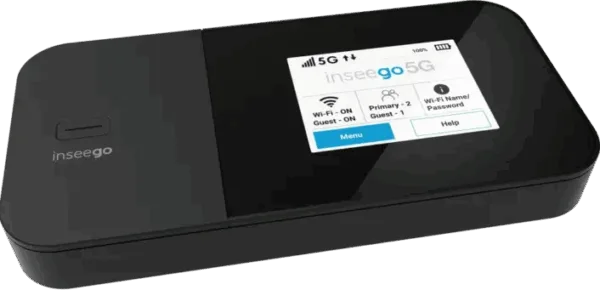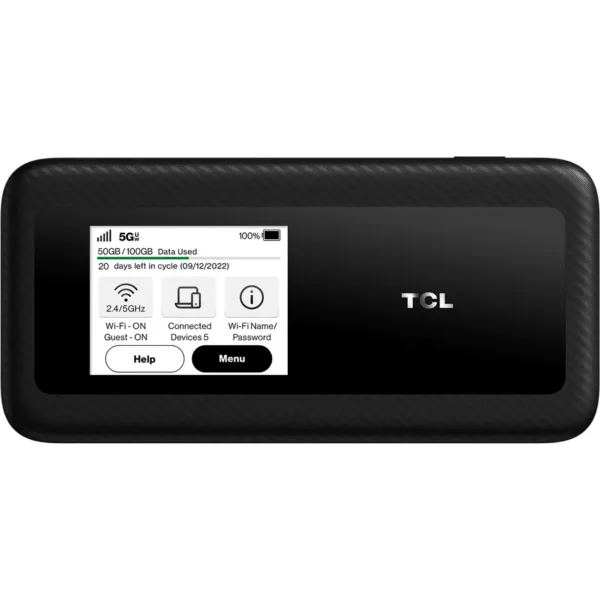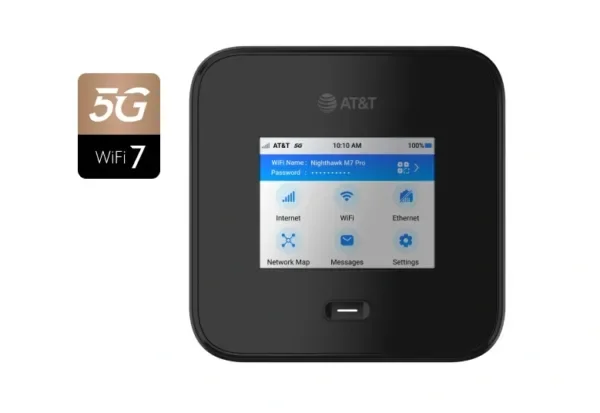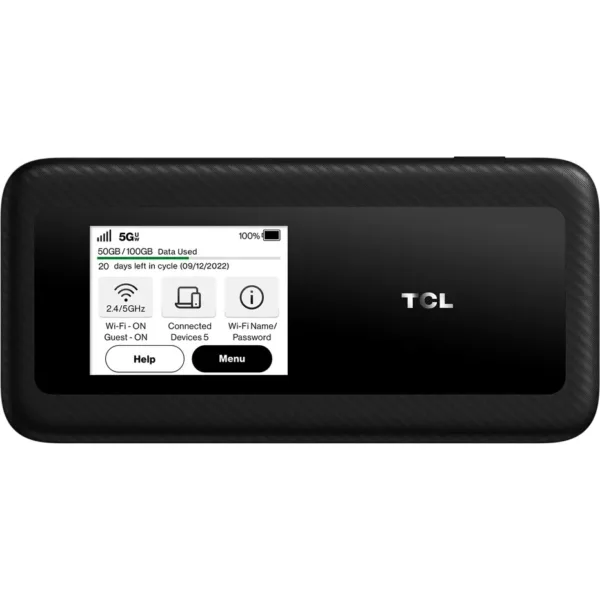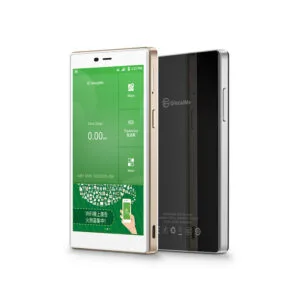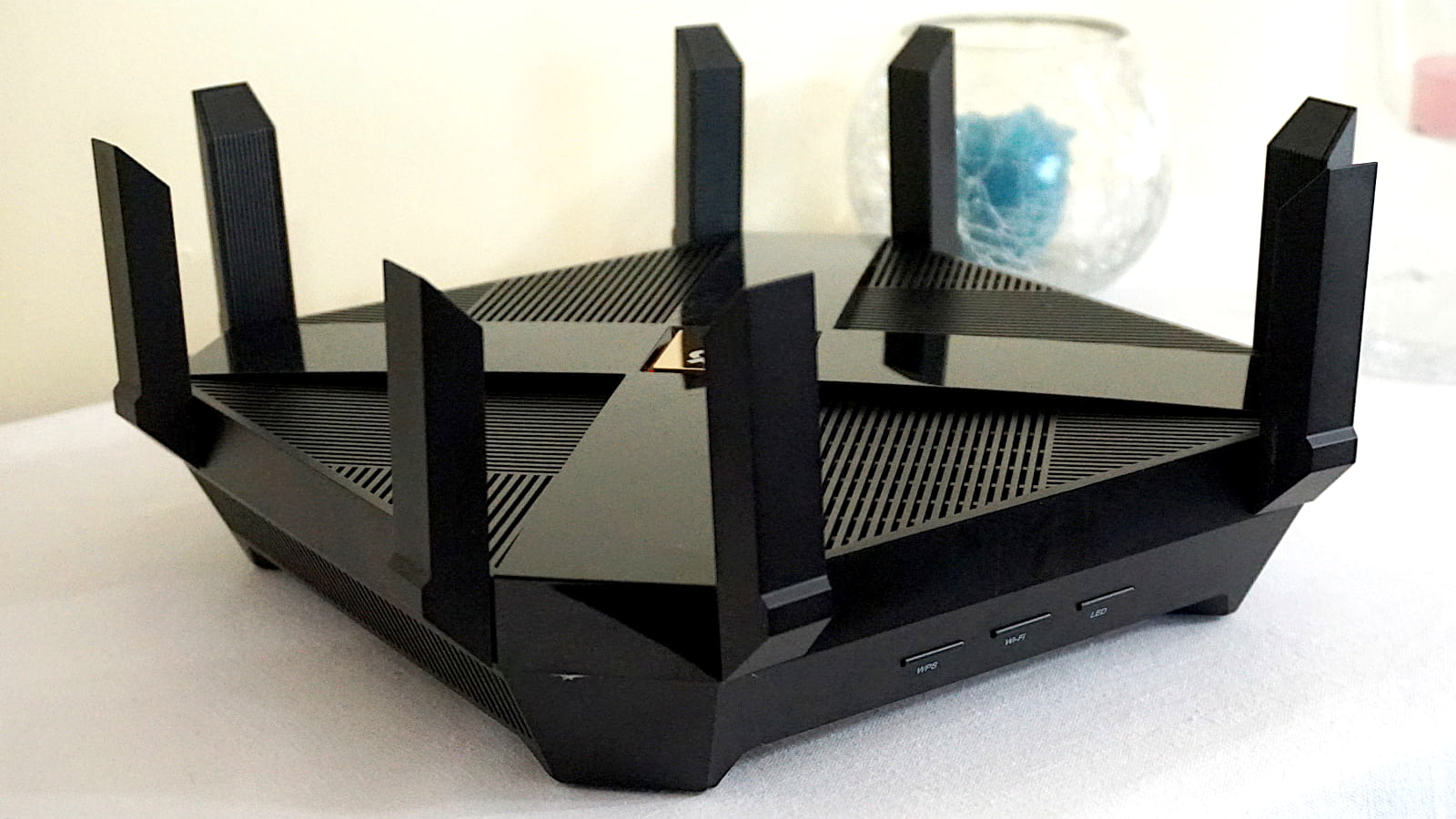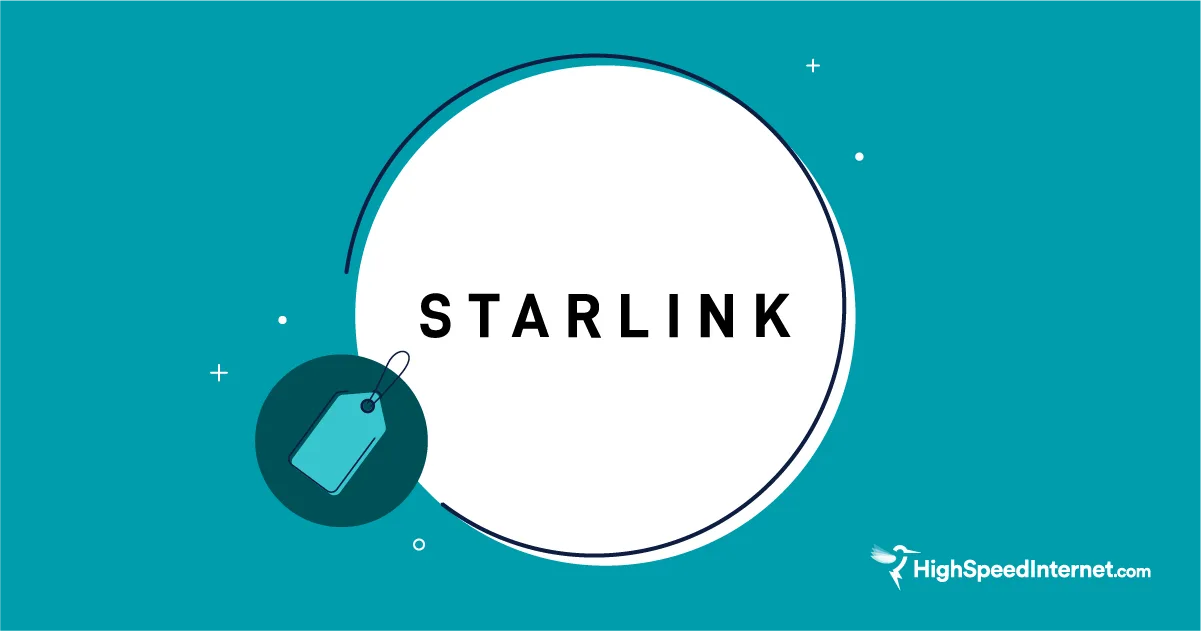The Best Mobile Hotspots of 2026
Get Wi-Fi on the go with one of these portable beauties
Aug 14, 2025 | Share
Brand Guides
-
Best overall hotspotT-Mobile Inseego MiFi X PRO 5G$264.00
- Access to the nation's biggest 5G network
- Speeds up to 1Gbps
-
Best Verizon hotspotTCL LINKZONE 5G UW$299.99
- Access to the 5G Ultra Wideband network
- Reverse charging technology
-
Best AT&T hotspotNETGEAR Nighthawk M7 Pro$449.99
- Wi-Fi 7
- Connectivity for 64 devices
Amazon.com prices as of 05/21/2025. Offers and availability may vary by location and are subject to change. See disclaimers.
In this roundup:
Best hotspot devices compared | Best mobile hotspot | Best Verizon hotspot | Best AT&T hotspot | Best user-friendly hotspot | What to look for in a mobile hotspot | Choosing 5G home internet instead | Portable Wi-Fi alternatives | FAQ
In this roundup:
Mobile hotspot devices create a personal Wi-Fi network you can log into when you’re away from home or working remotely. You need a good mobile network, for starters, because that’s how your hotspot connects you to the internet. From there, look for a device that can handle all that juicy speed without running out of battery power or taking forever to set up.
Our top pick in 2025 is the Inseego MiFi X PRO 5G from T-Mobile because it provides Wi-Fi 6 capabilities and super-powered antennas on the nation’s biggest 5G network. It has both USB-C and Ethernet ports, too, so hardwire tethering is a breeze.
Other mobile hotspots we recommend offer support for Verizon’s 5G Wideband or industry-leading Wi-Fi 7, and some have capabilities like reverse charging (so you can use your hotspot as a power bank).
You might be thinking, why not just use my personal hotspot on my smartphone? And you’re not wrong. Personal hotspots have a lot of perks, including more data per line on premium mobile plans and no need to buy extra gear. In fact, we now recommend smartphone hotspots for most individual users and portable internet solutions for heavy users.
However, dedicated mobile hotspots are still great if you manage a remote team, run payment software for a small business, or travel with multiple connected devices. Dedicated hotspot devices come with the following benefits:
- Longer battery life
- Connectivity for multiple devices
- Enhanced signal reliability
- Your choice of hotspot data plans from multiple major providers
We’ve done a ton of research into hotspots to help you find the best device for when you need Wi-Fi on the go. See our top recommendations below, then learn more about how to choose the right mobile Wi-Fi solution for your situation.
Our pick: Which mobile hotspot device is best?
T-Mobile’s Inseego MiFi X PRO 5G packs a huge punch for a fair price. It’s well-designed and easy to use, has a long-lasting battery, and can connect up to 32 devices simultaneously. It also works over all 5G bands, making it extremely fast and versatile. Better yet, it’s powered with a standard USB-C charger and has a range of 35 square feet.
While not everyone needs a 5G hotspot, the MiFi X PRO’s Wi-Fi 6 capability means you get consistent speeds even when you’re connecting a lot of devices. T-Mobile also has solid hotspot data plans with affordable rates and flexible plan options.
Looking for an easy way to test your hotspot speed?
Take our internet speed test or download our free mobile app to find out how fast your connection is—no matter where your travels take you.
Download our free, easy-to-use speed test app for quick and reliable results.
The four best mobile hotspot devices
- Best overall (also, best T-Mobile and best 5G hotspot): Inseego MiFi X PRO 5G
- Best Verizon hotspot: TCL LINKZONE 5G UW
- Best AT&T hotspot: NETGEAR Nighthawk M7 Pro
- Best user-friendly hotspot: GlocalMe G4 Pro 4G LTE Mobile Hotspot
Best hotspot devices compared
| Best for | Product | Price | Order online |
|---|---|---|---|
| Best overall | T-Mobile Inseego MiFi X PRO 5G | $264.00 | View on T-Mobile |
| Best Verizon hotspot | TCL LInkzone 5G UW | $299.99 | View on Verizon |
| Best AT&T hotspot | NETGEAR Nighthawk M7 Pro | $449.99 | View on AT&T |
| Best user-friendly hotspot | GlocalMe G4 Pro 4G LTE Mobile Hotspot Router | $169.99 | View on Amazon |
Offers and availability may vary by location and are subject to change. Data as of 5/21/2025. See disclaimers.
Best overall: T-Mobile Inseego MiFi X PRO 5G
Price: $264.00
Specs:
- Cellular connection: 4G, 4G LTE, 5G (including mmWave and C-band)
- Wi-Fi standard: Wi-Fi 6 (802.11ax)
- Wi-Fi bands: 2.4 GHz, 5 GHz
- Ports: USB-C, Ethernet
- Device max: 32
Data as of 5/21/2025. Offers and availability may vary by location and are subject to change. See disclaimers.
T-Mobile’s Inseego MiFi X PRO 5G is the most well-rounded hotspot you can get. It comes at the lowest price out of all the major 5G hotspots and connects up to 32 devices—far more than a phone or 4G hotspot could handle. It uses Wi-Fi 6 to maintain strong and consistent Wi-Fi signals even when you’re using it with a large group. Plus, a USB-C cable means it’s easy to find a power source from anywhere.
The MiFi X PRO also comes with settings for guest networks, MAC filtering, and a security firewall—all of which you can adjust by logging into the mobile app or the device’s interface from your browser. Just as importantly, the hotspot’s data plans are cheap and flexible: T-Mobile offers plans ranging from $10 to $30 per month, and they’re easy to adjust as needed.
Best of all, T-Mobile has the largest 5G network in the United States. A recent report from Opensignal shows it also gets the fastest average 5G speeds compared to Verizon and AT&T. The MiFi X PRO is compatible with all 5G bands—so you can count on getting the fastest speeds possible from this mini modern marvel.
 Reasons to buy:
Reasons to buy:
- Full 5G connectivity
- Access to the nation’s largest 5G network
- 13-hour battery life
 Reasons to avoid:
Reasons to avoid:
- No Wi-Fi 6E or Wi-Fi 7
Pro tip:
Take our speed test to see how fast your hotspot really is. A 5G hotspot can give you much faster speeds than most 4G hotspots and smartphones.
Best Verizon hotspot: TCL LINKZONE 5G UW
Price: $299.99
Specs:
- Cellular connection: 4G, 5G, 5G UW (including mmWave and C-band)
- Wi-Fi standard: Wi-Fi 6 (802.11ax)
- Wi-Fi bands: 2.4 GHz, 5 GHz
- Ports: USB-C, Ethernet
- Device max: 32
The TCL LINKZONE from Verizon packs plenty of power and comes with all the ports you need, plus a friendly 2.4-inch touchscreen that is chock-full of helpful information. It’s a little more expensive than our top pick, but it comes with access to Verizon’s highly reliable 4G and 5G networks.
The device also includes reverse charging capability, so you can use it to power up your cell phone as needed. It comes with a pre-installed SIM card from Verizon.
 Reasons to buy:
Reasons to buy:
- Access to 5G UW network (including mmWave and C-band)
- Reverse battery charging
 Reasons to avoid:
Reasons to avoid:
- No Wi-Fi 6E or Wi-Fi 7
- Compatible only with Verizon network
Best AT&T hotspot: NETGEAR Nighthawk M7 Pro
Price: $449.99
Specs:
- Cellular connection: 5G (including C-band)
- Wi-Fi standard: Wi-Fi 7 (802.11be)
- Wi-Fi bands: 2.4 GHz, 5 GHz, 6 GHz
- Ports: USB-C, Ethernet
- Device max: 64
NETGEAR’s Nighthawk M7 Pro is the most expensive mobile hotspot we recommend, but it’s the best way to be prepared for whatever the wireless future brings. The device uses Wi-Fi 7, which means lightning-fast connectivity for up to 64 devices at once.
You also get a bunch of perks, like the ability to offload to a nearby Wi-Fi network if one is available so you can save on data. That makes this hotspot a fantastic backup internet option in case your home or business internet is unreliable. It can all be managed remotely or with the big touchscreen on the front of the device.
Another big plus with the Nighthawk is that when you pair it with AT&T, you can get a ton of data. AT&T’s best hotspot service plan hooks it up with 100GB of data for $90 per month—that’s enough for heavy daily use for one person for a week or light use for a month. Plus, you get access to AT&T’s 4G network, which has the broadest reach of any we cover.
 Reasons to buy:
Reasons to buy:
- Blazing fast Wi-Fi 7 tech
- Wi-Fi offloading capability saves on mobile data
 Reasons to avoid:
Reasons to avoid:
- High price
- No reverse charging capability
Best user-friendly option: GlocalMe G4 Pro 4G LTE Mobile Hotspot Router
Price: $169.99
Specs:
- Cellular connection: 4G LTE
- Wi-Fi standard: Wi-Fi 4 (802.11n)
- Wi-Fi band: 2.4 GHz
- Port: USB-C
- SIM card requirement: No
*Amazon.com price as of 5/21/2025. Read disclaimer.
The GlocalMe G4 Pro is a little clunky, but it’s very easy to use—it looks a bit like a smartphone with a big touchscreen and pre-installed Google Maps app. You don’t need a SIM card with this hotspot; the device uses so-called CloudSIM technology to get you internet from various cellular providers. GlocalMe has its own data plans that you need to buy to stay connected.
Those data plans are pretty expensive, unfortunately, but you may be able to get 1.1GB of data free for 90 days. That’s not much, but it will let you test the device before you spend more money. The really good news is that the device works in the United States and overseas, making it a useful travel hotspot. We mainly like it because it’s user-friendly and easy to set up.
 Reasons to buy:
Reasons to buy:
- Connectivity in the U.S. and overseas
- Large smartphone-style touchscreen
- Connectivity for up to 10 devices at once
 Reasons to avoid:
Reasons to avoid:
- Expensive CloudSIM data plans
- Old Wi-Fi standard
What should you look for in a mobile hotspot device?
Hotspot devices used to be the domain of networking pros and geek squads, but don’t be intimidated. In this buying guide, we’ll walk you through everything you should consider if you’re ready to invest in a high-quality portable Wi-Fi device.
First, look for a mobile hotspot device that gives you wide and reliable network coverage, has a battery that lasts at least 10 hours (but ideally more), and can connect all the devices you will need. From there, decide based on how much speed you need, how many devices you need to connect at once, and how much you can afford to pay.
Choose the right mobile network
Your hotspot is only as good as the mobile network it’s connected to. For that reason, find the right network before you choose a device.
Network strength varies based on exactly where you are, but here’s a quick rundown of the top mobile providers (and the mobile virtual network operators).
T-Mobile: Offers the fastest 5G speeds on the biggest 5G network but may have spotty coverage outside urban and suburban areas.
Verizon: Offers the most reliable 4G and 5G coverage but has a smaller 5G network than T-Mobile and a smaller 4G network than AT&T.
AT&T: Offers the broadest 4G network, so you are more likely to get a signal in rural or remote areas.
Your choice of mobile network will also determine your options for monthly service plans, so now is a good time to think about how much data you’ll need.
Choose the right mobile hotspot data plan
Hotspot devices connect using special data-only plans from mobile phone providers. Some MVNOs offer these, but you’ll get the best connections, the biggest buckets of monthly data, and the best pricing from the three big mobile network operators: T-Mobile, Verizon, and AT&T.
First, figure out how much hotspot data you need. Then, compare prices and shop directly with the mobile phone providers.
| Plan | Price | High-speed data | Shop now |
|---|---|---|---|
| T-Mobile $20/mo. | $20.00/mo. | 5GB | |
| T-Mobile $30/mo. | $30.00/mo. | 10GB | |
| T-Mobile $10/mo. | $10.00/mo. | 2GB | |
| AT&T Prepaid data 20GB | $300.00/yr. | 20GB | |
| AT&T Prepaid data 15GB | $35.00/mo. | 15GB | |
| AT&T Prepaid data 50GB | $55.00mo. | 50GB | |
| AT&T Prepaid data 100GB | $90.00/mo. | 100GB | |
| Verizon Premium | $80.00/mo. | 150GB | |
| Verizon Pro | $60.00/mo. | 100GB | |
| Verizon Plus | $40.00/mo. | 50GB | |
| Verizon Essential | $20.00/mo. | 15GB |
Data as of 5/22/2025. Availability and speed may vary by location, and prices are subject to change.
Clear as mud? Get more details in our hotspot data plan buying guide.
Look into battery life
If you don’t have access to a strong Wi-Fi connection, there’s a good chance you won’t have access to a stable source of electricity, either. The best hotspots work all day long without requiring a recharge. In fact, battery life is one of the biggest advantages of standalone hotspots over phones, which tend to lose their power much more quickly when a personal hotspot is activated.
Packaging and tech specs will tell you how long a given device’s battery will last, but that figure is an estimate. Your mileage may vary based on signal strength, online activities, and the number of connected devices. That’s why it’s also good to look at recharge time. Most of our top recommendations have fast-charging capability, so we recommend looking for a device that charges at least halfway within two hours.
Consider the Wi-Fi standard and cell signal capabilities of your hotspot
If you want the best of the best, look for a hotspot device with Wi-Fi 7 capability. Wi-Fi 7 is the latest and greatest, but most phones and laptops still use the Wi-Fi 6 standard. Sticking with a Wi-Fi 6 hotspot might be a good way to save money.
Similarly, you can find 5G-enabled hotspots with mmWave and C-band capability, but you’ll pay a higher price than if you go with a 5G hotspot without the extra bands or choose a 4G or 4G LTE hotspot. It’s true that devices with 5G offer the fastest speeds, especially in congested areas, but remember that many rural areas don’t yet have 5G infrastructure. If you won’t be in busy cities often, sticking with a 4G mobile hotspot device might make sense.
Think about how many devices you need to connect
The more expensive your mobile hotspot, the more devices it should be able to connect at once. The capability depends partly on the Wi-Fi standard but also on the processor, RAM, and antenna configuration. It gets pretty technical, but breathe easy. Most manufacturers and resellers (including hotspot data providers) list the max number of connected devices on the box or in product descriptions online.
Calculate your hotspot device budget
You can buy used or refurbished hotspots for as little as $20 bucks on sites like eBay or Amazon, or you can spend up to $450 for the latest and greatest devices out there. It’s a big range, but thinking about how you’ll use the device can help you decide.
If you just need the hotspot for occasional connectivity at a remote vacation home, a device on the cheaper end is probably a good idea. But if you’re running a business that absolutely must process transactions in real time or one that handles highly sensitive files, you might want a fully supported 5G hotspot with at least Wi-Fi 6. If you’re running an emergency shelter that supports first responders, maybe the Wi-Fi 7 option with the ability to connect 64 devices at once makes sense.
How to buy a dedicated mobile hotspot device
You can buy a hotspot directly from a manufacturer or through your mobile phone carrier. In most cases, we recommend buying through your carrier. That way, you can make sure the device will work with your plan and benefit from your phone company’s tech support. You can also set up a payment schedule, which can be easier on your budget.
If you don’t want to be locked to just one carrier, you can buy your mobile hotspot device directly from a manufacturer (or online retailer). That doesn’t mean it will work with just any carrier, though. Before ordering, make sure to check for compatibility. From there, you might have to get a SIM card, eSIM, or Nano SIM card from your carrier before the device will do its job.
When should you stick with your phone’s hotspot?
Most people use personal hotspots on their smartphones rather than separate mobile hotspot devices. That way, you don’t need to worry about separate equipment or plans. In fact, most premium smartphone plans now offer more hotspot data than you can get with standalone plans. Furthermore, modern smartphones have enough processing power and the right antennas to support fast mobile speeds on tethered devices.
It’s also helpful to remember that free Wi-Fi is much more prevalent than it used to be. One recent study found that mobile phones are connected to Wi-Fi 82–89% of the time, depending on your carrier. Even away from home, smartphone users connect to Wi-Fi about 75% of the time.
Pro tip: Save your money
Unless you need a highly secure connection, a ton of data, or a bunch of devices connected at once, you can probably do without a separate hotspot device.
A hotspot isn’t as good as a home internet plan—but 5G internet is
Cellular companies have ramped up their hotspot options over the past few years, but hotspots still aren’t an adequate replacement for home internet—you simply can’t get the same speeds or amount of data from a mobile plan.
But if you are looking for a wireless solution to cable or DSL internet, consider 5G home internet. Verizon and T-Mobile both offer affordable 5G internet services that give you unlimited data and respectable speeds at a flat monthly rate—no need to worry about contracts or extra fees. AT&T also offers home internet on its 5G and 4G LTE plans in some areas.
5G internet is growing quickly, but watch out for slower speeds than you might get on a cell phone using the same data. The good news is that contracts are rare for these plans, and installation is a breeze.
| Plan | Starting price | Download speed | Order online |
|---|---|---|---|
| Verizon 5G Home Internet | $50/mo.* w/ AutoPay | Up to 1,000Mbps | |
| T-Mobile 5G Home Internet | $50/mo.† w/ AutoPay, plus taxes & fees. | Up to 415Mbps | |
| AT&T Internet Air | $60.00/mo.‡ | Up to 600Mbps |
Data as of 08/14/2025. Availability and speed may vary by location, and prices are subject to change.
* Price per month with Auto Pay & without select 5G mobile plans. Consumer data usage is subject to the usage restrictions set forth in Verizon’s terms of service; visit: https://www.verizon.com/support/customer-agreement/ for more information about 5G Home and LTE Home Internet or https://www.verizon.com/about/terms-conditions/verizon-customer-agreement for Fios internet.
† Delivered via 5G cellular network. Speeds vary due to factors affecting cellular networks. Speeds vary by location and signal strength. Plans available only in areas with qualifying 5G Home Internet coverage.
‡ Includes $5 off with AutoPay and Paperless Bill
Mobile hotspot not cutting it?
Enter your zip code to see a list of home internet options you can order today.
Portable internet alternatives
Sometimes, even the best mobile hotspot device isn’t good enough. You might need other options in the following scenarios:
- You’re in a remote area that doesn’t get any mobile signal
- You need more data than mobile phone companies offer
- You’re in a natural disaster that has impacted local cell towers
If that’s you, there’s good news! New portable Wi-Fi solutions from companies like Starlink and T-Mobile work well and are less expensive than ever. Starlink Roam is a great option if you’re in a remote area or part of disaster recovery. If you simply need unlimited data on the go but won’t be in super remote areas, consider T-Mobile Away.
Learn more about hotspot alternatives in our portable internet coverage.
FAQ about mobile hotspot devices
Can you use a mobile hotspot for home internet?
How much does a mobile hotspot cost?
How much does a hotspot plan cost per month?
Can you use a mobile hotspot device with Mint Mobile?
Does Visible phone service include a hotspot?
How do you get a mobile hotspot?
Are travel routers different from mobile hotspots?
Disclaimers
Amazon.com Prices as of 4/19/2024. Product prices and availability are accurate as of the date/time indicated and are subject to change. Any price and availability information displayed on Amazon.com at the time of purchase will apply to the purchase of this product. Highspeedinternet.com utilizes paid Amazon links.
CERTAIN CONTENT THAT APPEARS ON THIS SITE COMES FROM AMAZON. THIS CONTENT IS PROVIDED ‘AS IS’ AND IS SUBJECT TO CHANGE OR REMOVAL AT ANY TIME.
Author - Chili Palmer
Chili Palmer covers home tech services, with a special focus on understanding what families need and how they can stay connected on a budget. She handles internet access and affordability, breaking news, mobile services, and consumer trends. Chili’s work as a writer, reporter, and editor has appeared in publications including Telecompetitor, Utah Business, Idaho Business Review, Benton Institute for Broadband & Society, and Switchful.com.
Editor - Jessica Brooksby
Jessica loves bringing her passion for the written word and her love of tech into one space at HighSpeedInternet.com. She works with the team’s writers to revise strong, user-focused content so every reader can find the tech that works for them. Jessica has a bachelor’s degree in English from Utah Valley University and seven years of creative and editorial experience. Outside of work, she spends her time gaming, reading, painting, and buying an excessive amount of Legend of Zelda merchandise.
